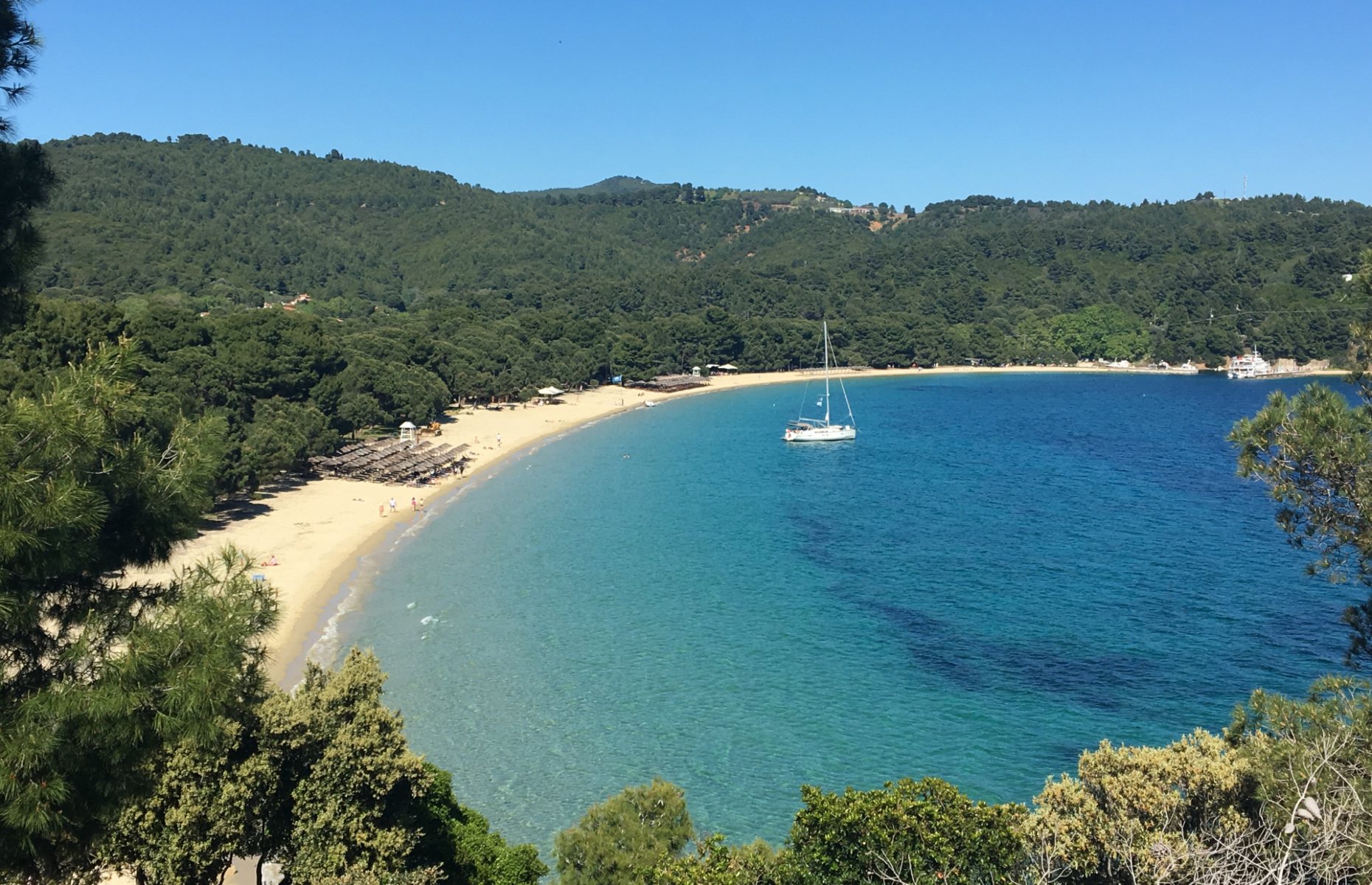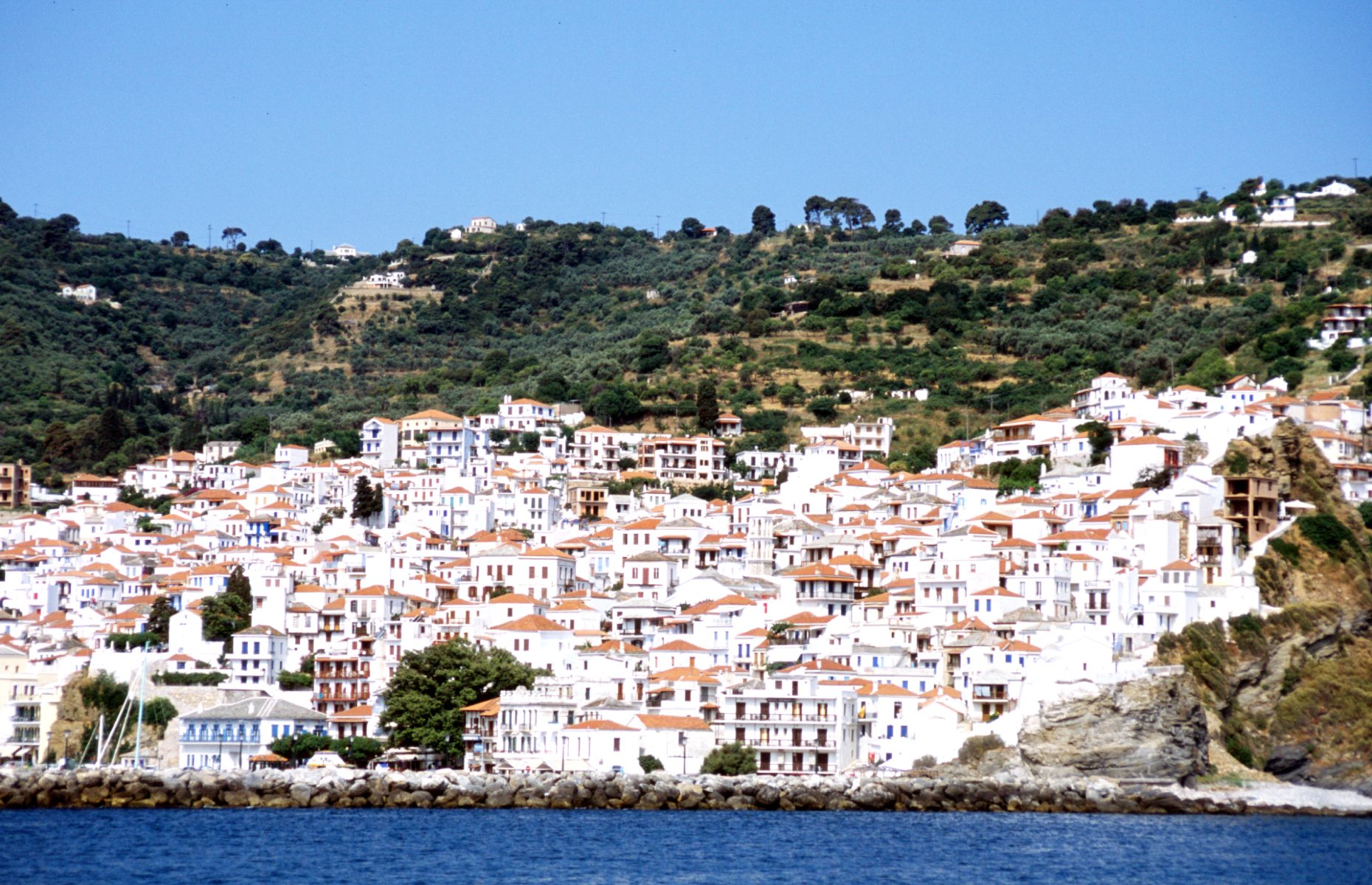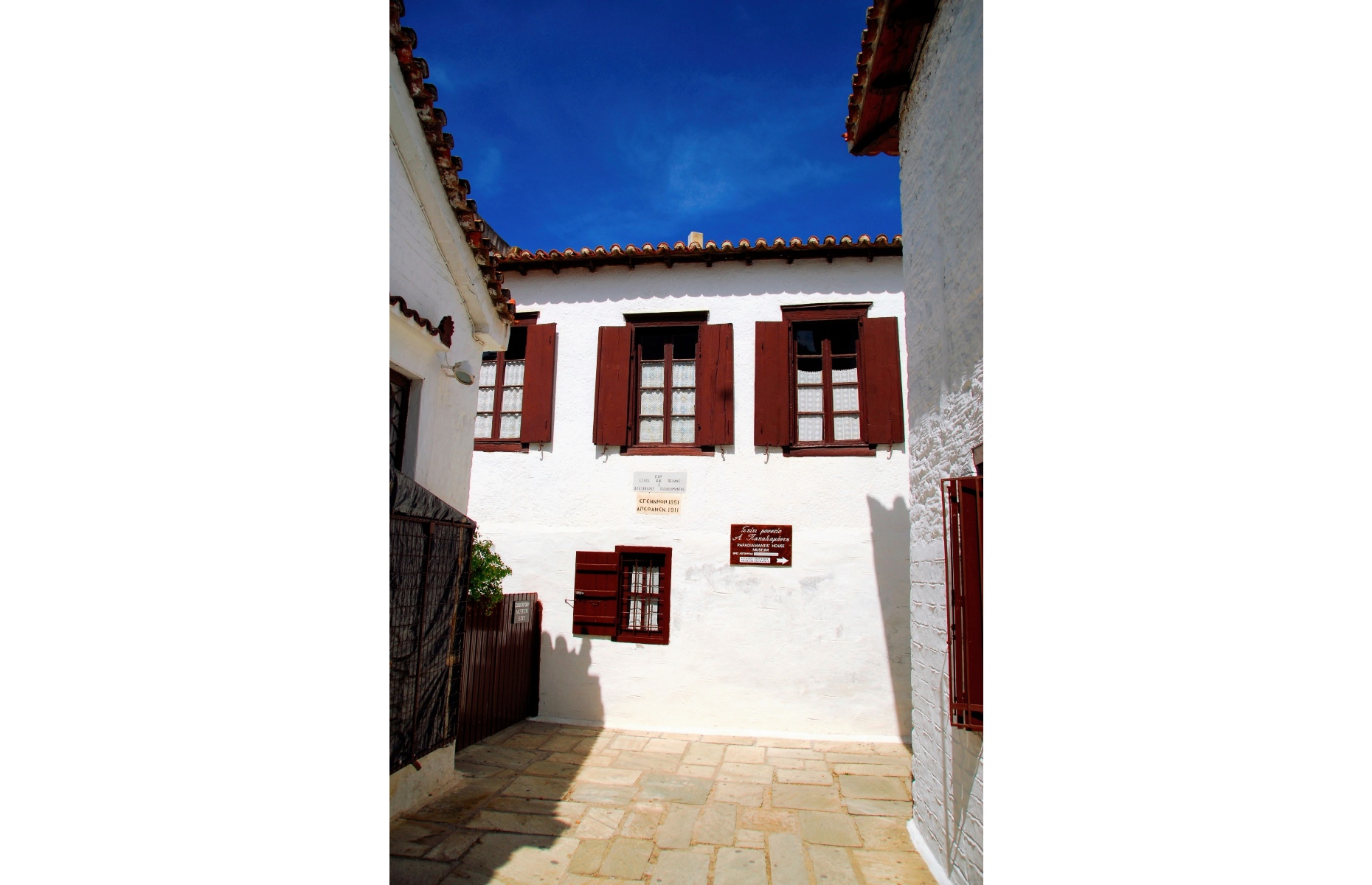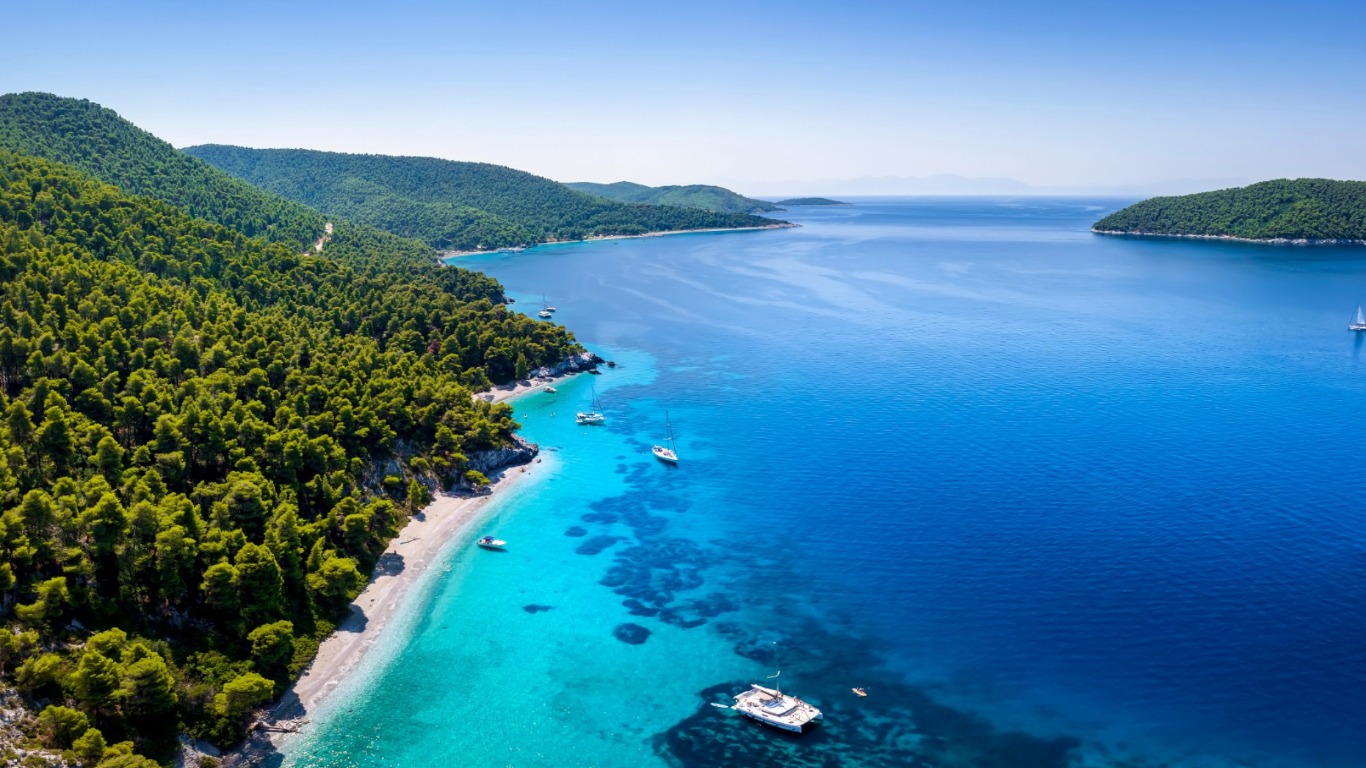Explore the Sporades: the top things to do, where to stay & what to eat
The islands of Skiathos, Skopelos and Alonnisos are all glorious and green Greek getaways for those looking for a little outdoor adventure, movie magic and fine food. Think it fits the bill for your next trip? Here's our insider guide to the luscious Sporades islands...
Where to go in the Sporades?
Travellers used to the aridity of well-trodden South Aegean islands such as Mykonos, Santorini or Crete might find the more northerly Sporades (just off the Volos peninsula) come as a shock: all three islands are green and lush, with the treeline often extending all the way to the shore. Commercialisation has started to creep in, but outside the developed part of southern Skiathos, it’s still a world of remote coves and solitary forest hikes. A world that’s becoming trickier and trickier to stumble upon in Greece.

Skiathos
Thickly wooded by fragrant pines and ringed by sandy beaches, Skiathos is the most popular of the Sporades, if only because it’s a landing point for all three islands thanks to its international airport. The capital, Skiathos Town (locally known as Chora), looks far more modern than you might expect, because it was rebuilt after it was razed to the ground by German forces in August 1944 as reprisals for the islanders' fierce resistance. The island has recovered well from the Second World War, and a lot of its current prosperity has to do with tourism.
It's not hard to see why the islands lure in repeat customers. Every Greek has heard of crescent-shaped Koukounaries, considered by many to be among the most beautiful beaches in all of Greece. Though it's now quite built up, it is very much the jewel in the crown of a string of beaches on the south side of Skiathos. For a quieter sunbathe, there are still multitudes of unspoilt sandy stretches on the island: in the north, there's the lesser-known Ligaries, limestone arch-laden Lalaria and grassy Kechria. Sleepy Agia Eleni in the west, meanwhile, is on par with any postcard pin-up.

Skopelos
The sloping amphitheatric setting of Skopelos's capital – also called Chora, which means ‘town’ in Greek – is perhaps one of the prettiest in the Aegean. Away from the town, all beaches on Skopelos are pleasingly peaceful, and the hiking and cycling routes through the mountains are top-notch. However, the island will forever be most famous as the setting of the insanely successful ABBA dukebox musical Mamma Mia. Take a day tour to see locations featured in the (first) film – of which there are many – and spend the nights with the locals reminiscing about the antics of Meryl Streep and Pierce Brosnan.
READ MORE: Stunning film locations that actually exist

Alonnisos
The least visited Sporades island, yet perhaps the most interesting, Alonnisos has a fascinating reputation that far exceeds its lower tourist numbers. For decades, it’s been a renowned centre for homeopathy studies through its International Academy of Classical Homeopathy which draws students from all over the world. There's even more beneath the surface; in 2020, Alonnisos' waters and nearby islets were designated a National Marine Park, which is the largest protected marine area in Europe.
READ MORE: Undersea treasures – the world's most incredible shipwrecks

The best hotels in the Sporades
Skiathos
If you have a car and wish to explore the island, the family-run Premier Hotel overlooking Troulos beach is ideal as it provides easy access to the main road to Chora, five miles (8km) away. For a sleep closer to the sand, stay in the boutique Hotel Mandraki, which offers fun social activities that range from Greek barbecue nights to movies by the pool.
Skopelos
The 4-star Alkistis hotel, in between the main town and pebbly Stafylos beach, is a perennial favourite with the Brits, claiming the largest swimming pool in the Sporades. Closer to town, Hotel Aeolos has an inviting seawater pool and serves a great buffet breakfast with Greek delights on cocktail sticks – perfect for pairing with sunrise views.
Alonnisos
The island is much sleepier and less developed than the other two and accommodations are scattered sporadically (if you'll pardon the pun), so you’d be better off going self-catered and renting a car. If you really crave a resort, then eco-conscious Marpunta, lying on its very own peninsula, is the best on the island and offers free paddleboards and kayaks for its guests.
READ MORE: How to stay where the rich and famous stay (without the big bills)
What to eat & drink in the Sporades Islands
The top item on the foodie agenda is the Skopelos cheese pie: think thin filo pastry with a filling of cheese (or cheese and spinach), rolled into a spiral like a Cumberland sausage, and fried until crunchy in extra virgin olive oil. Think you’ve seen them on a previous Greek odyssey? A small factory on Skopelos makes the common supermarket versions, which you can buy all over Greece.

Though not your typical Greek island fare, tuna salad is what you should try on Alonnisos, known for its albacore tuna catch. The fish is said to be better than North Atlantic varieties as it contains no heavy metals. Fillets go through a traditional process in which they are cleaned and cooked in salt water, then preserved in glass jars with organic olive oil for ultimate freshness. Want to try these delicacies for yourself? On Alonnisos, you can do no better than Astrofegia restaurant, which also offers hearty kleftiko, home-bottled wine and occasional Greek dancing, as well as wonderful sea views.
The top things to do in the Sporades
Skiathos
Born on Skiathos in 1851, Alexandros Papadiamantis is considered a colossus of Greek literature, a kind of Dickens crossed with Dostoyevsky; even Skiathos’s airport bears his name. Although he worked in the capital of Athens most of his life, he returned to the island and died of pneumonia in a whitewashed house in 1911. His Chora home is now open to the public. You can buy translations of Papadiamantis’s work from the small bookshop on the ground floor.

READ MORE: Explore Athens, the top things to do, where to stay and what to eat
History buffs can dig a little deeper into the island's past by visiting the eerie shell of Kastro, the once-fortified Skiathot capital. In 1538, the Turkish pirate Hayreddin Barbarossa paid an unwelcome visit to the Byzantine citadel, capturing it and laying it to waste. The town came under Ottoman rule until it was ultimately abandoned in the 19th century, because the inhabitants wanted to build a more modern town. Today, it stands precariously over the sea, a reminder of Greece's turbulent past as the subject of many invasions.
Skopelos
Go all out and take the full-day Mamma Mia tour, or if you’re short on time, simply discover the two most famous filming locations for yourself. On the grey sand beach of Kastani, laugh at tourists trying to replicate the snorkel-themed Does Your Mother Know? scene by dancing on the sand, and finding it impossible (for the actual film, a temporary concrete platform was built for the dancers under the sand).
You can also climb up to the Chapel of St. John at Kastri that served as the wedding church, but you may struggle to belt out The Winner Takes It All while clambering its 110 steps. If you find an earring, get in touch with Meryl Streep. Rumour has it she lost one there and, despite the throngs of tourists who’ve been looking for it since, it hasn’t yet been found...

Alonnisos
A leisurely boat trip to the National Marine Park is a must. You may see striped and common dolphins, the critically endangered Mediterranean monk seal, as well as rare seabirds such as Eleonora’s falcon and Bonelli’s eagle. You’ll swim in pristine bays, you’ll hike to the Cyclops’ cave on nearby Gioura island, and you’ll visit the 16th-century monastery of Virgin Mary on Kira Panayia island. This monastery is a dependency of Mount Athos, an exclusive Eastern Orthodox peninsula on the mainland.
In 2020, the Alonnisos underwater museum opened for divers to explore an ancient shipwreck off the island of Peristera, lying at a depth of approximately 98 feet (30m). Dated around 425 BC – and discovered in 1985 AD – the ship was loaded with 4,000 wine amphorae (jugs) that rest on the seabed in a staggering 82-foot (25m) line. It’s a remarkable sight, bookable only through local experienced operators. Don’t feel confident going under the sea? Fear not: non-divers can explore the shipwreck using augmented reality at the Knowledge Awareness Centre at Chora on Alonnisos.
Lead image: Sven Hansche/Shutterstock
READ MORE: The world's most jaw-dropping underwater attractions
Comments
Do you want to comment on this article? You need to be signed in for this feature
